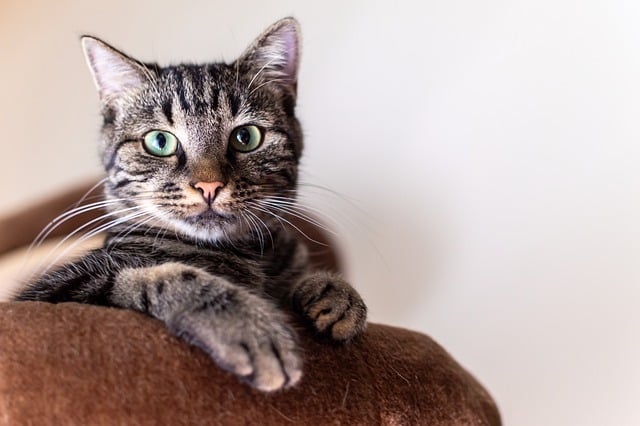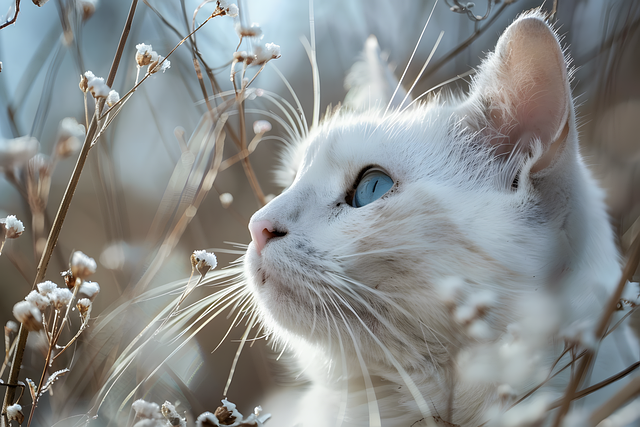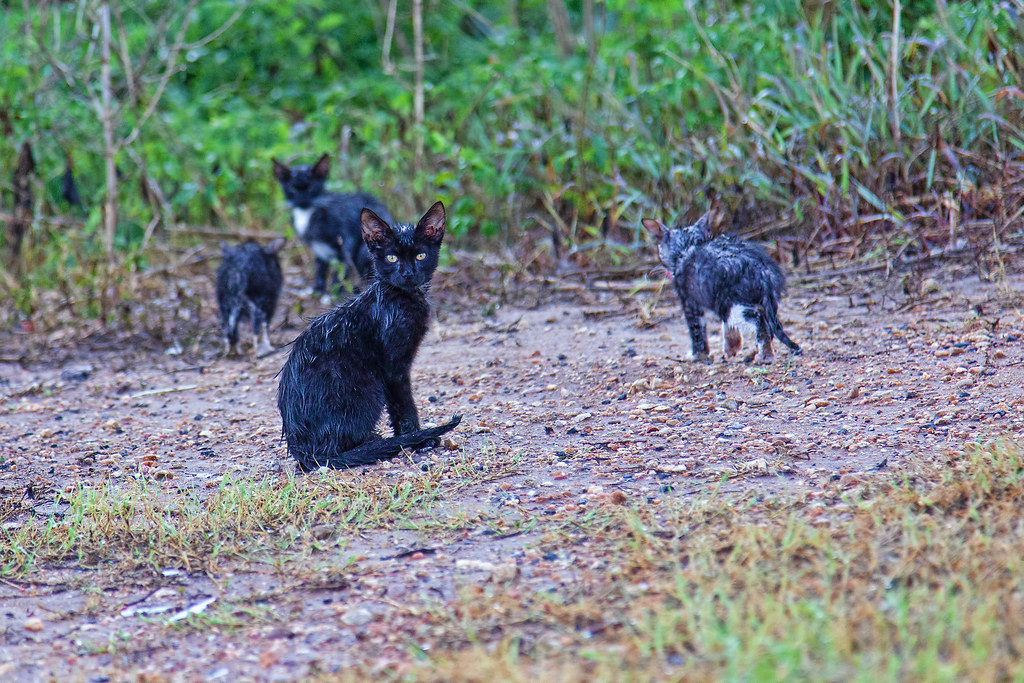The similarities between cats and dogs include being domesticated animals and having four legs. Differences include cats being more independent, while dogs are generally more sociable.
Cats and dogs are two of the most popular pets worldwide, each with its own unique characteristics and qualities. While both animals are beloved for their companionship and loyalty, they exhibit distinct behaviours and traits. Cats are known for their independent nature and self-sufficiency, often preferring solitude and privacy.
On the other hand, dogs are typically more social and outgoing, enjoying the company of their human companions and other animals. Understanding the similarities and differences between cats and dogs can help pet owners provide the best care and environment for their furry friends.
Cats Vs. Dogs: Companions At A Glance
Cats vs. Dogs: Companions at a Glance
Initial Impressions

Cats and dogs are popular pets with distinct personalities and characteristics.
Initial impressions of cats and dogs can vary based on individual preferences and lifestyle.
Popularity As Pets

Cats are known for their independent nature, making them ideal for busy individuals.
Dogs, on the other hand, are known for their loyalty and companionship, suiting those seeking constant companionship.
Ancestry And Evolution
Find the intriguing similarities and differences between cats and dogs through their ancestry and evolution. Uncover how these beloved pets have evolved differently yet share common genetic traits. Explore the fascinating journey of these animals from their ancient ancestors to the domesticated companions we know today.
Ancestry and Evolution
Divergent Lineages
Cat and dog, despite their similarities as popular pets, have divergent lineages. Cats belong to the Felidae family, and their ancestors can be traced back to a solitary, carnivorous predator that roamed the earth around 25 million years ago. Dogs, on the other hand, belong to the Canidae family, with their lineage extending back to a social, pack-oriented predator that emerged around 40 million years ago. These distinct evolutionary paths have shaped the behaviours, physical attributes, and dietary preferences of both species.
Domestication History
The domestication history of cats and dogs also differs significantly. Cats were likely self-domesticated in the Near East, where they began living near humans to hunt rodents around 9,000 years ago. This gradual domestication process allowed cats to maintain their independent nature while benefiting from the protection and resources provided by human settlements. Dogs, on the other hand, were actively domesticated by humans from their wolf ancestors, with the earliest evidence of domesticated dogs dating back approximately 15,000 years. This intentional domestication led to the development of various dog breeds tailored to specific roles and environments.
In summary, while both cats and dogs have been domesticated and share some common traits as companion animals, their ancestry and evolutionary paths have resulted in significant differences in their genetic makeup, behaviours, and domestication history.
Physical Characteristics
When comparing the physical characteristics of cats and dogs, it’s important to look at their size and build, as well as their coat types and care. Both species have distinct features that make them unique, but there are also some similarities that can be observed.
Size And Build Comparison
Cats are generally smaller and more slender than dogs. They have a more flexible body, allowing them to move swiftly and gracefully. On the other hand, dogs come in a wide range of sizes and builds, from tiny Chihuahuas to massive Great Danes. Their bodies are often more robust and muscular, suited for various tasks such as hunting, herding, or guarding.
Coat Types And Care
When it comes to coat types, both cats and dogs exhibit diversity. Cats have a wide variety of fur types, including short, long, curly, and even hairless. Their grooming needs vary depending on the length and texture of their coat. Dogs, too, can have short, long, curly, or wiry coats, each requiring different levels of maintenance. Regular brushing, bathing, and trimming may be necessary to keep their coats healthy and free from mats and tangles.
Behavioural Traits
Cats and dogs exhibit various behavioural traits that are unique to their species.
Social Behaviours
Cats are more solitary animals, while dogs are known for their pack mentality and social nature.
- Cats: Prefer independence and may not seek human or animal companionship.
- Dogs: Thrive on social interaction and enjoy being part of a group or family.
Territorial Instincts
Both cats and dogs have territorial instincts, but they display them differently.
| Cats | Dogs | |
|---|---|---|
| Marking territory | Use scent glands to mark their territory with urine or scratching. | Mark territory by urinating or defecating in specific areas. |
| Defending territory | Will hiss, growl, or fight to defend their territory from intruders. | May bark, growl, or show aggressive behaviour to protect their space. |
Communication Styles
Cats and dogs may communicate differently, but both rely on various signals to express their needs and emotions. Understanding the communication styles of these beloved pets can help pet owners build stronger bonds with them.
Vocalizations And Body Language
- Cats: Meow, purr, hiss, and growl are common vocalizations. They also use tail movements and ear positions to convey emotions.
- Dogs: Bark, whimper, howl, and growl are typical vocalizations. They use wagging tails, raised hackles, and body posture to express themselves.
Understanding Signals
- Cats: Slow blinking indicates trust, while a raised tail shows happiness. Ears flattened against the head signal fear or aggression.
- Dogs: A wagging tail can mean excitement or friendliness, while a tucked tail signals fear or submission. Raised hackles indicate arousal or aggression.
Bonding With Humans
Bonding with humans is a crucial aspect of the relationship between cats and dogs. Both animals have unique ways of connecting with their human companions, showcasing affection, loyalty, and companionship in their own distinct manners.
Affection Display
Both cats and dogs show affection towards their human counterparts, albeit in different ways. Cats often display affection through subtle gestures such as purring, headbutting, or gently rubbing against their owners. Dogs, on the other hand, are more overt in their displays of affection, typically wagging their tails, licking their owners, and seeking physical closeness.
Loyalty And Companionship
When it comes to loyalty and companionship, both cats and dogs excel in forming strong bonds with their human companions. Cats are known for their independent nature, but they typically form deep emotional connections with their owners, providing companionship and comfort. Dogs, on the other hand, are renowned for their unwavering loyalty, typically creating strong emotional attachments and showing immense devotion to their human family members.
Care And Maintenance
For cat and dog care and maintenance, both pets require regular grooming, feeding, and veterinary check-ups. However, cats are more independent while dogs need more exercise and social interaction. Understanding these differences will help you provide the best care for your furry companions.
Feeding Habits
Cats and dogs have different feeding habits. Cats are obligate carnivores and require a diet high in animal protein. They should be fed small, frequent meals throughout the day. On the other hand, dogs are omnivores and can thrive on a balanced diet that includes both animal and plant-based ingredients. They usually have larger meals once or twice a day.
Exercise Needs
Both cats and dogs require regular exercise to stay healthy. Dogs require daily walks and active playtime to expend their energy and maintain a healthy weight. Cats, on the other hand, are more independent and can get their exercise through interactive toys and vertical spaces for climbing and jumping.
Health And Lifespan
Cats and dogs share similarities and differences in their health and lifespan. Let’s explore these aspects in detail.
Common Health Issues
- Cats: Cats are prone to dental issues, hairballs, and urinary tract infections.
- Dogs: Dogs commonly face obesity, arthritis, and heartworm problems.
Average Lifespans
| Breed | Cat | Dog |
|---|---|---|
| Average Lifespan | 10–13 years | 10-13 years |
The Role In Human Society
Both cats and dogs play crucial roles in human society, providing companionship and emotional support. While they share similarities as popular pets, such as being loyal and affectionate, they differ in terms of independence and behaviour. Cats tend to be more independent, while dogs are known for their social and obedient nature.
Cats And Dogs In Culture
Cats and dogs have been domesticated for thousands of years and have become an integral part of human culture. They are often depicted in art, literature, and media, reflecting the roles they play in our lives. For example, cats are typically associated with mystery and independence, while dogs are considered loyal companions and protectors.
Their Impact On Human Well-being
Both cats and dogs have been shown to have a positive impact on human well-being. Owning a pet can reduce stress, anxiety, and depression, and can also provide a sense of purpose and responsibility. In addition, pets can provide social support and companionship, which can be especially important for older adults or those living alone.
Their Role In Ensuring Human Safety
Dogs have traditionally been used for hunting, herding, and guarding, while cats have been used for pest control. Today, dogs are typically trained for law enforcement and search and rescue operations, while cats are used in therapy programs to provide emotional support to those in need.
In conclusion, while cats and dogs have their differences, they both play important roles in human society. Whether as companions, protectors, or emotional support animals, they bring joy and comfort to millions of people around the world.
Choosing The Right Pet For You
Choosing the right pet for you can be an exciting yet daunting decision. Cats and dogs are two of the most popular choices for pets, each with their own unique characteristics and requirements. Understanding the similarities and differences between the two can help you make an informed decision that aligns with your lifestyle and preferences.
Lifestyle Considerations
When considering a pet, it’s important to assess your lifestyle and living situation. Cats are typically more independent, making them well-suited for individuals with busy schedules or smaller living spaces. On the other hand, dogs thrive on companionship and require more attention and exercise, making them ideal for active individuals or families with a yard.
Allergies And Pet Compatibility
Allergies and pet compatibility are crucial factors to consider when choosing between a cat and a dog. While both animals can trigger allergies in some individuals, cats are more likely to cause allergic reactions due to their dander. However, certain dog breeds are considered hypoallergenic and may be suitable for individuals with allergies. It’s essential to spend time with both cats and dogs to gauge your compatibility before deciding.
Frequently Asked Questions
How Is A Cat Similar To A Dog?
Cats and dogs are similar in some ways, such as being domesticated pets, having fur, and being loyal companions to their owners. They also require attention, food, water, and regular grooming. However, they have different personalities, behaviours, and physical attributes.
Why Are Cats And Dogs So Similar?
Cats and dogs share a common ancestor, which explains their similar traits and behaviours. Their evolution has led to comparable physical and behavioural characteristics.
What Do Cats And Dogs Have In Common Traits?
Cats and dogs both exhibit loyalty, affection, and playfulness. They also require regular exercise, grooming, and proper nutrition. Both animals communicate through body language and vocalizations, and they form strong bonds with their human companions.
How Are Cats Compared To Dogs?
Cats are more independent, while dogs crave attention. Cats are low-maintenance, while dogs require more care. Cats are quieter, while dogs are more vocal. Cats are better for smaller spaces, while dogs need more room to roam. Each has its unique qualities.
While cats and dogs both make great pets, they have distinct differences. Understanding their unique traits can help you choose the right pet for your lifestyle. Whether you prefer the independent nature of a cat or the loyal companionship of a dog, both animals bring joy and love to our lives.
